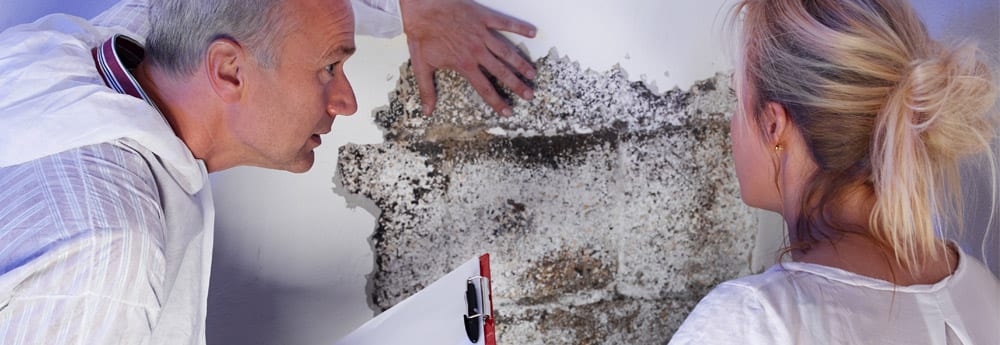Damp is arguably one of the least welcome visitors to any property. Not only is it visually unappealing, especially when it forms into mould, but it can also damage your property and your furniture – it can even harm your health.
 © Karin & Uwe Annas / Adobe Stock
© Karin & Uwe Annas / Adobe Stock
Causes of damp
Damp forms when moisture collects and can’t escape. There are various causes of damp, and in order to remove it, you need to understand what’s causing it in the first place. As well as being able to see damp, you might also be able to smell it.
The most common cause of damp in a property is from condensation. Excess moisture in the air that can’t escape occurs from a number of sources. Rooms that are steamy, such as the kitchen through cooking, or the bathroom from showering, are more prone to damp, but rooms used for drying clothes may also be affected.
If you put shoes away in cupboards that are still wet from outdoors, or clothes away in wardrobes that aren’t completely dry after washing, the moisture will get trapped in the confined space and could lead to damp and mould spores affecting these items. You might start to notice your clothes smell musty and grey/green patches might even start to appear on clothes.
Spillages on furniture that aren’t quickly dealt with could also contribute to damp, especially if the furniture is placed close to a wall or next to other items. Old books are often prone to attracting mould, so check your bookshelves regularly for any tell-tale signs.
Rainwater from outside can also leak into your property if there are any holes or cracks in the tiles, roof or chimney, resulting in penetrating damp. Blocked gutters and pipework may also allow water to seep into your dwelling.
When moisture enters porous materials in walls, this is known as rising damp – moisture comes from below the ground.
The problem with damp
If you suspect damp is a feature of your property, fix it sooner rather than later. Left to fester, it causes mould that can damage wall structures, which could prove costly to repair. Crucially, mould spores won’t do your health any favours. Research has found that those who live in damp properties are 75% more likely to suffer from respiratory problems.
Removing damp
Often, removing the source of the damp problem may be all that’s required to solve the issue.
Improve ventilation in your property. When cooking, open windows or use an extractor fan, and place a lid on pans. Keep the window open in the bathroom after showering. Make sure washing machines and tumble dryers are correctly fitted and ventilated, and dry clothes outdoors as much as possible. Keep your home heated at a reasonable temperature to prevent moisture from sticking to cold walls and windows.
It’s essential that you allow air to circulate to prevent damp and mould from taking hold. Avoid placing furniture against walls, especially outside walls, and don’t push furniture items close together.
If you are cleaning inside a cupboard, leave the door open until it is dry inside. If you notice damp on furniture, wipe it off with a special cleaning solution – bleach may be suitable for some surfaces.
If you notice mildew on furniture, such as soft furnishings, wood or mattresses, you might also find it useful to vacuum the item before cleaning it – to remove loose mould spores.
Where there are damp patches on walls, you will need to identify the source of any possible leaks. Look out for blockages in pipes and gutters, loose or broken tiles, cracks in joints or crumbling areas in brickwork mortar. Get these repaired as soon as possible.
You can remove small patches of mould yourself but wear protective gear and keep doors closed to prevent spores from spreading.
Professional help is often required to assess damp sources and to fix the problem, especially with rising damp. In this case, measures might be taken to help the property breathe, using a special damp proof lining – lime plastering, for instance, is often favoured. Damp proof courses that use chemical solutions injected into the wall to create a water-resistant layer are also used to prevent damp, as is adding solid material between brickwork. Buildings with concrete floors may benefit from having a polythene damp proof membrane fitted.
Bear in mind that even after you’ve rectified the damp, it can take a few weeks for the property to dry out completely, especially if it’s a new-build. Using a dehumidifier may help to speed up the process.
Safeguarding your property from damp ensures a secure and healthy environment. To really make your house into a comfortable home, go one step further and kit it out with functional and stylish furniture with the help of Let Us Furnish.
